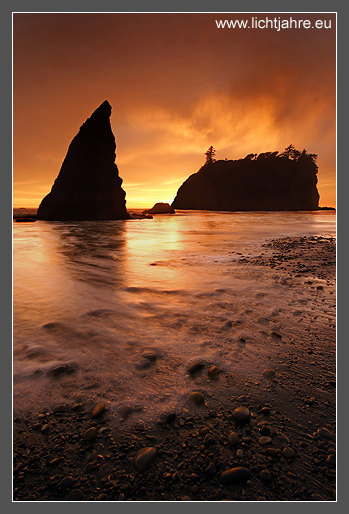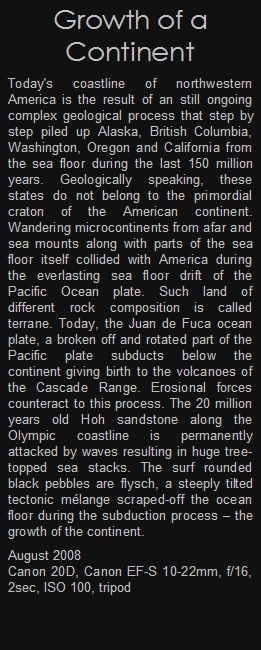

Growth of a Continent
Today's coastline of northwestern America is the result of an still ongoing complex geological process that step by step piled up Alaska, British Columbia, Washington, Oregon and California from the sea floor during the last 150 million years. Geologically speaking, these states do not belong to the primordial craton of the American continent. Wandering microcontinents from afar and sea mounts along with parts of the sea floor itself collided with America during the everlasting sea floor drift of the Pacific Ocean plate. Such land of different rock composition is called terrane. Today, the Juan de Fuca ocean plate, a broken off and rotated part of the Pacific plate subducts below the continent giving birth to the volcanoes of the Cascade Range. Erosional forces counteract to this process. The 20 million years old Hoh sandstone along the Olympic coastline is permanently attacked by waves resulting in huge tree-topped sea stacks. The surf rounded black pebbles are flysch, a steeply tilted tectonic mélange scraped-off the ocean floor during the subduction process – the growth of the continent.
August 2008
Canon 20D, Canon EF-S 10-22mm, f/16, 2sec, ISO 100, tripod




















